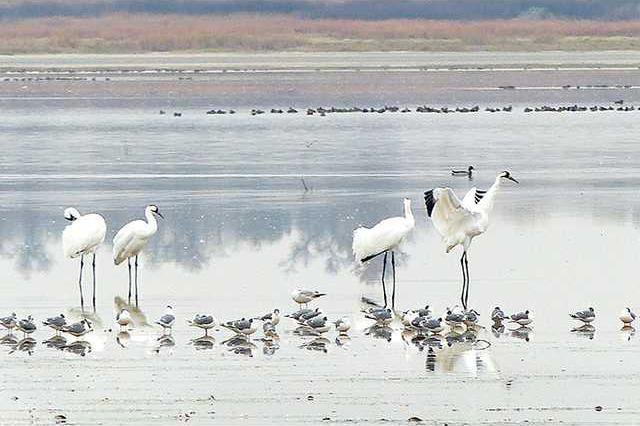STAFFORD COUNTY – Annually each fall, central Kansas is one of the few places where it is possible to see whooping cranes. From late October through early November, up to 60 or more of these rare birds are sighted at Quivira National Wildlife Refuge.
The earliest-recorded first arrival, Oct. 6, occurred in 2000, but the average first arrival date is Oct. 21, said Barry Jones, QNWR visitor services specialist.
Whooping cranes use Quivira’s open salt flats and wetlands to roost during their visits, but each group typically doesn’t stay more than a day or two, with many just stopping overnight. Group size averages two to five birds.
Visitors may be able to view them at or near Quivira, but occurrences are not daily, and are scattered over several weeks, Jones said. “Your best chance to find them at Quivira is at either dusk or dawn, and most often at either Little Salt Marsh, at Quivira’s south end, or at the north end of the Refuge in the area of Big Salt Marsh.”
The whooping crane is the tallest bird species in North America, standing nearly five feet tall. Adults are pure white, with dark legs and bill, and a dark red cap and “moustache.”
In flight, the trailing edges of the outer half of the wings are black. They do not swim nor perch in trees. Young birds, hatched the previous summer in Canada, are similar in size to the adults, but very rusty-brown in color.
“If you see what you believe to be whooping cranes, report any sighting as soon as possible to Quivira National Wildlife Refuge,” Jones said. Be sure to note the location, date, and time, as well as a physical description of the birds and their behavior.
Keep a minimum of one half mile distance from them, and do not approach them on foot. “If you observe them from a vehicle, please remain in your vehicle,” he said.
To report a whooping crane sighting, or to find out more information about the birds, check the “Whooping Crane Page” on Quivira’s website





